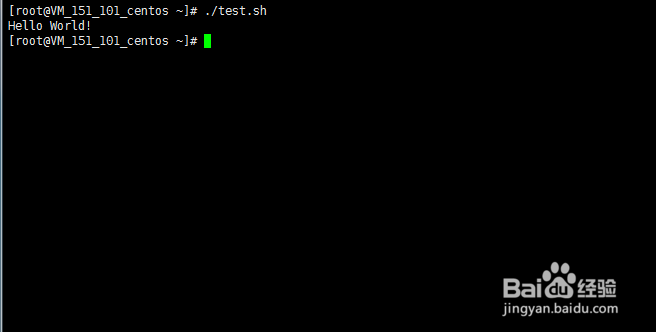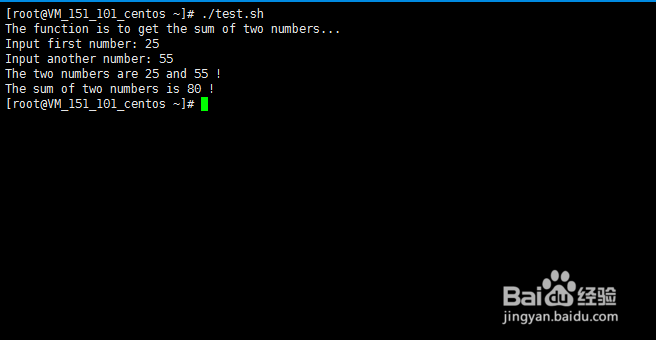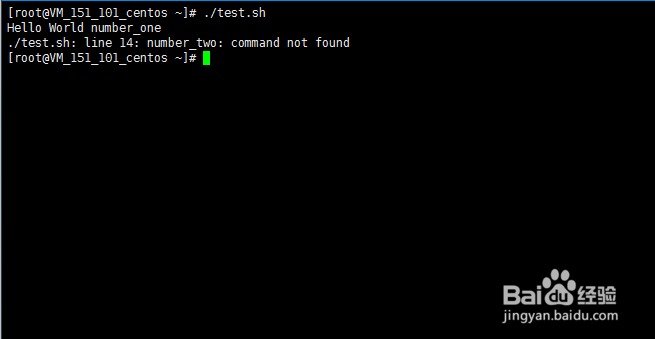Shell中函数使用
1、Shell 函数的定义格式如下:
function_name () {
list of commands
[ return value ]
}
如果你愿意,也可以在函数名前加上关键字 function:
function function_name () {
list of commands
[ return value ]
}
2、 函数返回值,可以显式增加return语句;如果不加,会将最后一条命令运行结果作为返回值。
Shell 函数返回值只能是整数,一般用来表示函数执行成功与否,0表示成功,其他值表示失败。如果 return 其他数据,比如一个字符串,往往会得到错误提示:“numeric argument required”。
如果一定要让函数返回字符串,那么可以先定义一个变量,用来接收函数的计算结果,脚本在需要的时候访问这个变量来获得函数返回值。
3、先看一个简单的例子
#!/bin/bash
# Define your function here
Hello () {
echo "Hello World!"
}
# Invoke your function
Hello

4、再来看一个带有return语句的函数
#!/bin/bash
funWithReturn(){
echo "The function is to get the sum of two numbers..."
echo -n "Input first number: "
read aNum
echo -n "Input another number: "
read anotherNum
echo "The two numbers are $aNum and $anotherNum !"
return $(($aNum+$anotherNum))
}
funWithReturn
# Capture value returnd by last command
ret=$?
echo "The sum of two numbers is $ret !"

5、再来看一个函数嵌套的例子
#!/bin/bash
# Calling one function from another
number_one () {
echo "Hello World number_one"
number_two
}
number_two () {
echo "Hello World number_two"
}
number_one

6、像删除变量一样,删除函数也可以使用 unset 命令,不过要加上 -f 选项,如下所示:
$unset -f function_name
例如:
#!/bin/bash
# Calling one function from another
number_one () {
echo "Hello World number_one"
}
number_two () {
echo "Hello World number_two"
}
number_one
unset -f number_two
number_two #运行number_two时会报函数没注册

7、调用函数时可以向其传递参数。在函数体内部,通过 $n 的形式来获取参数的值,例如,$1表示第一个参数,$2表示第二个参数...
#!/bin/bash
funWithParam(){
echo "The value of the first parameter is $1 !"
echo "The value of the second parameter is $2 !"
echo "The value of the tenth parameter is $10 !"
echo "The value of the tenth parameter is ${10} !"
echo "The value of the eleventh parameter is ${11} !"
echo "The amount of the parameters is $# !" # 参数个数
echo "The string of the parameters is $* !" # 传递给函数的所有参数
}
funWithParam 1 2 3 4 5 6 7 8 9 55 66

8、注意,$10 不能获取第十个参数,获取第十个参数需要${10}。当n>=10时,需要使用${n}来获取参数。
另外,还有几个特殊变量用来处理参数,前面已经提到
